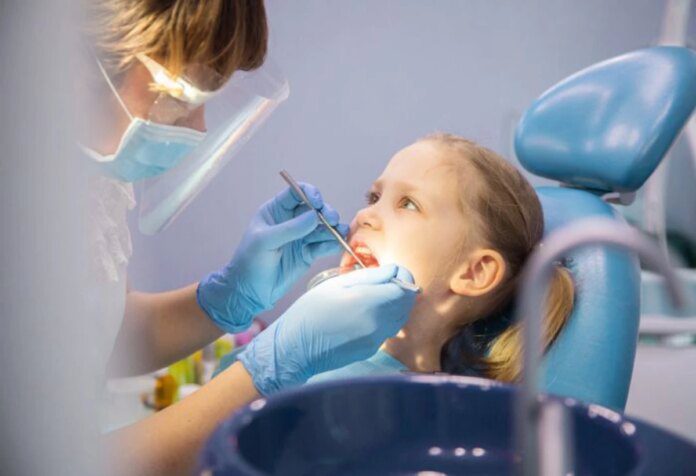
The American Association of Orthodontists, the most important orthodontic association in the world, recommends that every child, before turning 7 years old, first visit an orthodontist. An intervention at the most suitable moment of growth allows a better result and a shorter therapy time.
A visit before the age of 7 allows, first of all, to identify bad habits that can cause or aggravate a malocclusion. Among them, the most important and frequent ones are sucking on objects or fingers, oral breathing and swallowing in the case of infants. These bad habits must be corrected as soon as possible.
Why are children’s teeth crooked?
“Even from the stage of changing the teeth, you can sometimes notice that the teeth are more crowded. At this stage, the teeth appear and even are incongruent with the child’s face. Often, the newly erupted teeth have the size and shape adapted to the face of adults, so they are bigger, because they will accompany the children throughout their entire lives”, we learn from Dr. Lorelei Nassar, specialist in implantology at the Clinica ce i named.
This situation can occur for several reasons: the premature extraction of one or more milk teeth, which leads to the displacement of the surrounding teeth to close the empty space. “Our body doesn’t like empty places, they don’t exist in nature, so it rushes to close them! Therefore, crowded teeth appear like this”, points out Dr. Nassar.
Another reason could be the fact that the little one inherited the shape of the teeth from one parent, and the shape of the dental arch and facial bones from another, and there is a disproportion between them. So again we are talking about crowded teeth. Sometimes, for some teeth there is no more room in the arch, so they remain included in the jaws, without erupting.
What to do?
“In any situation like this, a panoramic x-ray and a dental consultation must be done. He will, of course, recommend a visit to an orthodontic specialist, who will give the necessary explanations on the stage at which the orthodontic appliance must be inserted, the period of time during which it will have to be worn and what will happen next,” adds the specialist.
It’s good to remember that, for growing children, starting orthodontic treatment is a very important and challenging phase in their lives. The better the teeth are aligned, and the easier they can be cleaned, the better the juxtaposition between the two dental arches. So, the lower the incidence of periodontitis, which is the main cause of premature tooth loss.
“The need to start orthodontic treatment comes not only from aesthetic considerations, because a child with crooked teeth is not beautiful. Oh no! He’s handsome anyway! But for functionality (a harmonious closing of the upper teeth on the lower ones) and for hygiene (aligned teeth can be cleaned much easier, crowded ones always retain retention niches for food debris), correcting crooked teeth is absolutely indispensable for the child’s health, and, of course, also mastication,” adds Dr. Nassar.
What is the right age for fixing and wearing a dental appliance?
The specialist implantologist Lorelei Nassar is of the opinion that: “There is no precise age to start orthodontic treatment, it depends on each case and the type of malocclusion of the child. In some cases, it is necessary to intervene early because the goal of treatment is to correct a skeletal problem. So, it is good for the child to start wearing braces at the age of 6, because children’s bones are more malleable and react better to orthopedic forces. While in other cases, however, it is necessary to intervene later. It is often necessary to correct the position of the teeth, which start out crooked. If the problem is not skeletal, but dental, it is possible to intervene at the end of growth.”
Which dental appliance is recommended for children?
“Dental appliances are of several types, fixed (the current ones, with small plates fixed on each tooth and connected to each other with wires) or mobile, slightly out of fashion, similar to grandma’s prosthesis. In turn, the fixed appliances are also of several types, metallic or ceramic, barely visible or invisible. In addition, they can have colored elastic, for the children’s great fun”, informs the specialist implantologist Lorelei Nassar.
Practically, dental appliances can be applied at any age. “Because orthodontics is not the prerogative of children or teenagers, but can be used at any age: teeth are always moving! I have had 56-year-old patients with orthodontic appliances,” points out the specialist of the Implantology Clinic, Dr. Nassar.
In conclusion, there is always room for better, and prevention is the first recommendation of any doctor. That is why every parent must pay attention to how their child develops and take into account any control necessary to assess the child’s health and a harmonious development as an adult.






































